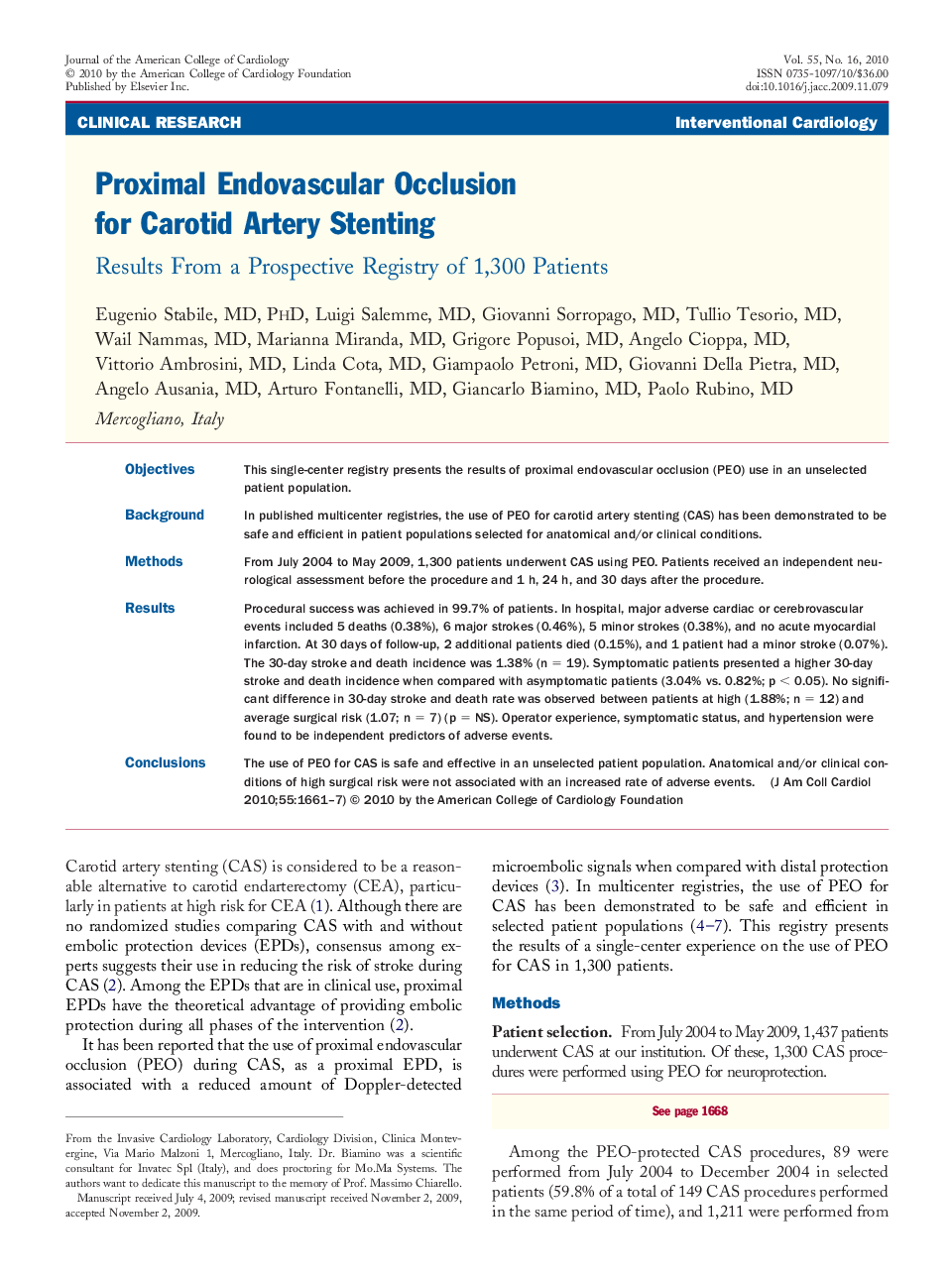| Article ID | Journal | Published Year | Pages | File Type |
|---|---|---|---|---|
| 2951114 | Journal of the American College of Cardiology | 2010 | 7 Pages |
ObjectivesThis single-center registry presents the results of proximal endovascular occlusion (PEO) use in an unselected patient population.BackgroundIn published multicenter registries, the use of PEO for carotid artery stenting (CAS) has been demonstrated to be safe and efficient in patient populations selected for anatomical and/or clinical conditions.MethodsFrom July 2004 to May 2009, 1,300 patients underwent CAS using PEO. Patients received an independent neurological assessment before the procedure and 1 h, 24 h, and 30 days after the procedure.ResultsProcedural success was achieved in 99.7% of patients. In hospital, major adverse cardiac or cerebrovascular events included 5 deaths (0.38%), 6 major strokes (0.46%), 5 minor strokes (0.38%), and no acute myocardial infarction. At 30 days of follow-up, 2 additional patients died (0.15%), and 1 patient had a minor stroke (0.07%). The 30-day stroke and death incidence was 1.38% (n = 19). Symptomatic patients presented a higher 30-day stroke and death incidence when compared with asymptomatic patients (3.04% vs. 0.82%; p < 0.05). No significant difference in 30-day stroke and death rate was observed between patients at high (1.88%; n = 12) and average surgical risk (1.07; n = 7) (p = NS). Operator experience, symptomatic status, and hypertension were found to be independent predictors of adverse events.ConclusionsThe use of PEO for CAS is safe and effective in an unselected patient population. Anatomical and/or clinical conditions of high surgical risk were not associated with an increased rate of adverse events.
